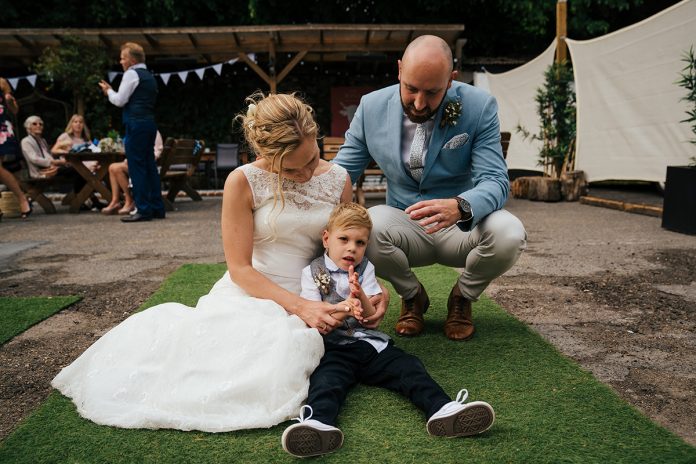Dr Katie Finch discusses with Professors Darren Griffin and Alan Thornhill her personal journey involving genetic testing of her son Brandon
Whole genome sequencing has rapidly evolved from a multi-billion-dollar international research effort to a sub-£1,000 test available on the internet. But how has this been embraced and perceived by those who need it most? Do families with genetic conditions understand how far testing has come and are all clinicians involved in their care aware of how these developments could benefit their patients?
This article follows the personal journey of someone who, after completing a PhD studying chromosomes, discovered that her firstborn had a chromosome rearrangement.
For most families with a child displaying significant developmental delay, chromosome analysis (karyotyping) is the first test they encounter. First applied clinically in the 1970s, the report provides a picture resembling matching pairs of stripy socks. An extra sock number 21 would indicate Down syndrome for instance. Our chromosomes contain our genes, our genes make our proteins and proteins build every part of us. If a chromosome, or even part of one, is extra or missing, this presents a problem. Every family’s case is unique. This is Katie and Brandon’s.
July 2012: Brandon’s parents were called to a meeting with the Lead Genetic Consultant to discuss results of the “DNA microarray” test taken three months earlier. Since birth, Brandon had gained a mere 1.8kg despite Total Parental Nutrition delivered directly to his bloodstream 24 hours a day; a perpetual struggle to get this five-month-old baby to just 10lb. He’d had tests for: Cystic Fibrosis (life-expectancy 40 years), ultrasounds for gall stones, Wolfran Syndrome tests (life-expectancy 30 years), Erythema Elevatum Diutinum (requiring a 5mm puncture wound through each layer of skin), ulcerative colitis (two endoscopies under general anaesthetic with multiple gastrointestinal biopsies), heart defects (ECG and ultrasound imaging), gastrointestinal motility disorder (multiple x-rays following a barium feed). Not to mention daily blood tests and four-hourly blood glucose heel-pricks.
The geneticist explained that Brandon had a small deletion and a duplication on chromosome number 1 (arising while he was still an embryo). No other children had been recorded with this specific condition meaning no-one knew what this might entail for Brandon’s future or his life-expectancy.
Microarray results don’t look like socks. They contain more precise information as to whether a piece of chromosome is extra or missing. From her PhD training, Katie knew exactly what Brandon’s result “1q42.3q43x3, 1q43q44x1” meant in scientific terms; she was only just beginning to learn however that a clear diagnosis was the key to accessing essential support services, therapies and government benefits. Professionals like Katie can search databases to find similar reported cases, or trawl through hundreds of case-studies looking for links between patients; this is, however, more challenging for most families. Ultimately, even if two individuals have identical rearrangements, they may have vastly different symptoms and life prospects.
Rare chromosome conditions paradoxically are collectively common, affecting >400,000 children per year globally. Several professional and academic databases record these rare genomes but they can’t always translate into useful information for families. The international organisation Unique (www.rarechromo.org) supports, informs and networks with families and professionals translating medical terminology and genetic results to families while sharing accessible stories. For many chromosome conditions, Unique has created comprehensive guides and can connect families with similar genomes for mutual advice and support. The specific guide for Brandon’s condition highlighted an increased prevalence of flaws in midline brain development and associated seizures. Had Katie seen this guide in 2012, she would have been forewarned that her baby’s eyes might roll into the back of his head, his body go limp and his lips turn blue as she held him. She could have learned how to deal with seizures before the first one happened.
It’s important to remember that having a genetic result does not always translate to a specific diagnosis or named condition. The UK’s SWAN organisation (Syndrome Without A Name was established to support families where a child or young adult is believed to have a genetic condition but testing has failed to identify its cause. SWAN suggests that around 6,000 children with a genetic condition likely to remain undiagnosed are born every year in the UK alone. So, where do we go from here? What if an anomaly isn’t detected in a child with a condition, or, even if it is, what if the genes affected don’t match the symptoms?
The Deciphering Developmental Disorders (DDD) project began in 2011 and has decoded precise genetic sequences in genomes of >13,500 families within the UK’s 24 Regional Genetics Services. Of the 6,000 children born with complex needs and no diagnosis, one-third will die before their fifth birthday. Questions have recently been raised regarding newborn screening since only nine diseases are screened for in the UK compared to 25-50 in most high-income countries. The rare disease community and Genetic Alliance have asked the UK Government to re-evaluate its newborn screening strategy.
The cost to the NHS of extending services, perhaps to whole genome sequencing, would undoubtedly be significant because, while sequencing costs continue to decrease, the cost to collate information and translate this appropriately to families is high in an already stretched service. Conversely, the potential for massive savings in neonatal and paediatric care is compelling by targeting diagnoses rather than simply testing for the most common disease first in an often fruitless, expensive and soul-destroying succession of tests – the so-called “diagnostic odyssey”. In a society where whole genome screening can be ordered over the internet, it should be possible.
Finally, what does a genetic diagnosis mean for families affected by chromosome disorders? For some, it means that they can meet others in similar situations, learn from one another and be part of a wider community in a world that often excludes people who look or act differently. For Brandon, it means that his healthcare team can review other cases and pre-empt his future medical requirements; they can prepare other families that children with this particular rearrangement often have seizures and complex learning difficulties. Katie can seek support and provide it to others with similar rearrangements. Comprehensive genetic testing gives some families an answer they have previously sought in vain. It can give families the confidence to talk about their child’s condition and answer that question that parents of children with additional needs regularly hear:
“What’s wrong with your child?”
Rather than an awkward silence or embarrassed hunt for the right words, a parent can confidently reply:
“Nothing, but he does have a bit of chromosome 1 muddled up, which makes him a little different to other kids”.
Please note: This is a commercial profile











